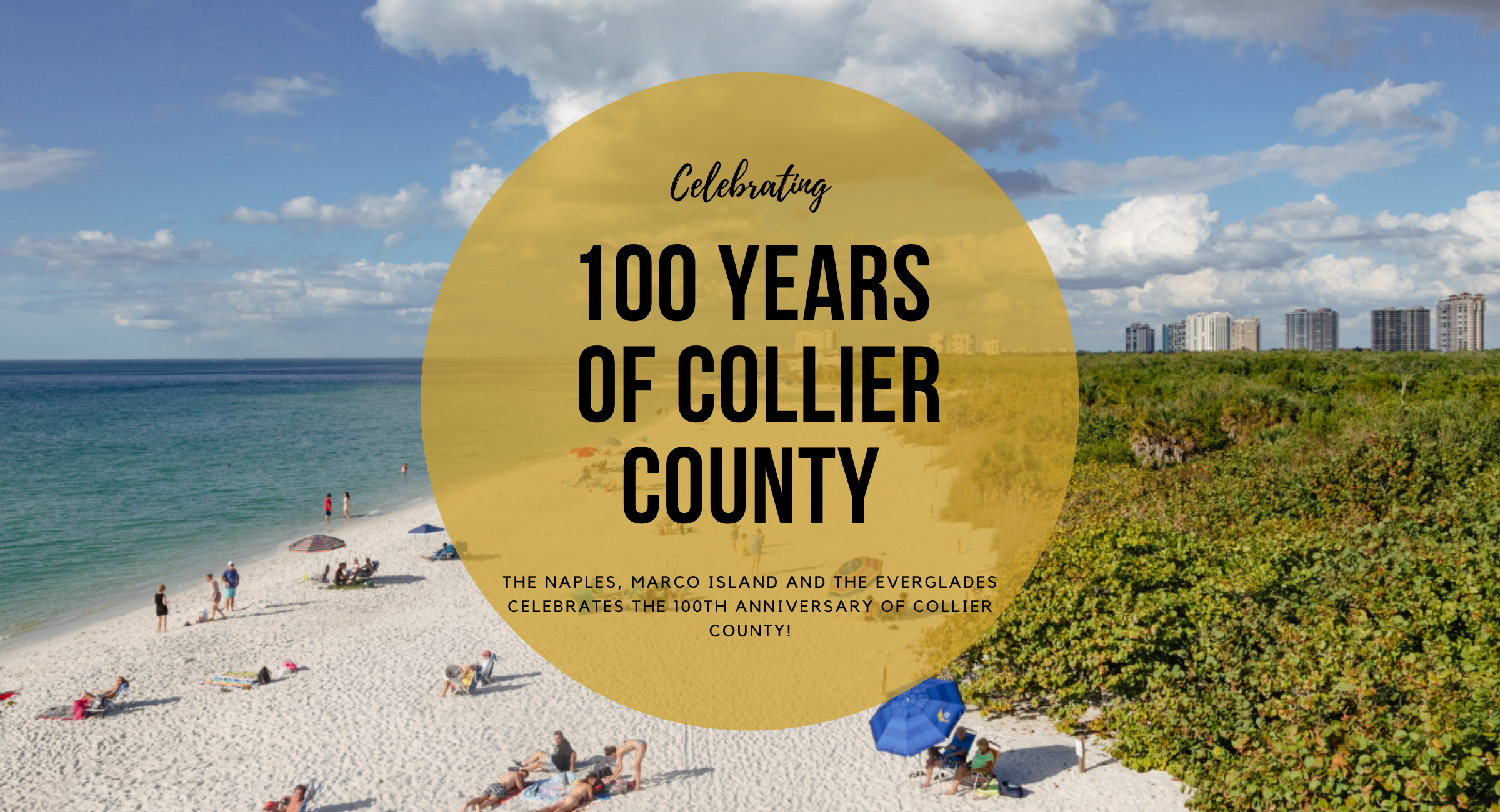Florida’s Paradise Coast, also known as Collier County, Florida, has a long and rich history that has shaped the community into what it is today. From its earliest days as a small settlement to its modern-day development as one of the most popular tourist destinations in the United States, Collier County has evolved over time to become an integral part of Florida’s history.
A BRIEF HISTORY OF FLORIDA’S PARADISE COAST
Collier County in southwest Florida has been home to a variety of local Floridians for over 10,000 years. It was once part of the Calusa domain, which defended the coast from Spanish colonization. The Seminoles of north Florida migrated to what would become modern-day Collier County in the early 1800s, living among the cypress swamp and hunting in the high prairies. It wasn’t until the 1870s that more permanent towns and communities were established, such as Everglades City, Marco Island, Immokalee, and Naples.
BECOMING COLLIER COUNTY
Collier County became Florida’s 62nd county in 1923, and since then has grown into a world-class community known for its natural beauty, white sand beaches, colorful sunsets, and unique wildlife. Additionally, the growth of Naples, Marco Island, and the Everglades as tourist destinations has created an extraordinary foodie scene, unique shopping, and world-class arts and culture.
FLORIDA’s PARADISE COAST
Collier County, Florida is a world-class destination with a wide variety of activities and sights to see. Beachgoers can find their beach style on more than 30 miles of Gulf shoreline, outdoor adventure seekers can choose from fishing, shell collecting, guided excursions, eco-tours, golfers can tee it up at one of the county’s 90 courses, foodies can taste the flavors of paradise at one of the community’s many award-winning restaurants, and art lovers can enjoy an incredible arts and culture scene, art galleries and ARTE VIVA!, a yearlong celebration of Hispanic arts and culture.
HISTORY OF NAPLES & THE PARADISE COAST
General John S. Williams and Walter Haldeman, the owner of the Louisville Courier Journal newspaper, sailed down the coast of Southwest Florida in 1885 to find a piece of mainland where they could establish their city. As they sailed by present-day Naples, they discovered miles of beaches and a bay just behind the beach. The Naples Town Improvement Company was founded in 1886 to establish a town named Naples and develop it as a winter retreat. The company purchased 3,712 acres between the Gulf of Mexico and Naples Bay for $11,136, or $3 an acre.
THE FIRST HOTEL & BEACH HOMES
The Naples Town Improvement Company was sold at public auction in 1890, with Walter Haldeman as the only bidder. He bought the company in its entirety, including 8,600 acres of land, the hotel, the pier, the steamship Fearless, and General Williams’ house. Ed Crayton, a successful land developer from St. Petersburg, came to town in the early 1900s and bought all of Haldeman’s property except for his home. Under Crayton’s supervision, many changes were made during this time, including the introduction of electric power in 1926, the rail service in 1927, and the completion of the Tamiami Trail in 1928. With high hopes of big development, a market crash in 1929 and World War II a few years later kept Naples a small but lovely oasis until the mid-1950s.
THE CREATION OF COLLIER COUNTY
Collier County was created in 1923 and its early economic growth was closely tied to Memphis-born millionaire Barron Gift Collier. With his fortune from streetcar advertising, Collier introduced paved roads, electric power, telegraphs and countless new businesses and homeowners to Florida’s last frontier. The completion of the Tamiami Trail in 1928 also unlocked the region’s agricultural and resort potential. World War II introduced hundreds of aircraft servicemen to Naples and Collier County, and Hurricane Donna in 1960 stimulated Naples’ growth with an infusion of insurance money and loans. The county seat was transferred from Everglades City to East Naples in 1962, signaling a new era of sustained growth in agriculture, tourism, and real estate.
INDIAN TRIBES & EUROPEAN SETTLERS
The first humans reached Southwest Florida 10,000 years ago, with the earliest archaeological evidence of man discovered in 1980 at the Bay West Site in Collier County. Calusa Indians initially occupied the land, but they eventually succumbed to warfare, enslavement and European disease epidemics. By the early 1700s, the Seminole Native Americans settled in the area, but with ongoing disputes with white settlers and government pressure to move to reservations west of the Mississippi River, the Seminoles fought the U.S. Army to a stalemate. The few surviving Seminoles found refuge deep in the Everglades and Big Cypress Swamp where they developed a culture uniquely suited to the climate and terrain of south Florida.
After the Civil War, farmers and squatters made their way south. Early pioneers fished and hunted for a living, raised crops, dug clams, made charcoal, sold bird plumes, and trapped otters and alligators for their pelts and hide. By the late 1880s, Naples and Marco Island were already gaining popularity as winter resorts
EXPERIENCE THE HISTORY
Step back in time in Everglades City and its neighboring areas. While Everglades City and Immokalee perfectly preserve the county’s natural wonders, Chokoloskee and Ochopee in Collier County keep local history alive with quaint landmarks. Visit Ochopee’s Post Office, the smallest in the U.S., or the Historic Smallwood Store in Chokoloskee for a time capsule of artifacts and Florida’s pioneer history.
Visit the Everglades National Park Gulf Coast Visitor Center in Everglades City for passes, activities, and information from the National Park Service on exploring the Everglades. Angle for tarpon, snook, or redfish in the Ten Thousand Islands, canoe the 99-mile Wilderness Waterway, take a swamp walk through Fakahatchee Strand Preserve State Park, or visit the Audubon’s Corkscrew Swamp Sanctuary in Immokalee.
For more information, visit Paradise Coast – Celebrating 100 years of Collier County.

